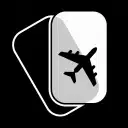Get Ready For “Capacity Cuts”
Like everyone else, the major commercial airlines have been hurt by the current economy. But a recent news story caught my eye, detailing how the big carriers are responding to the downturn.
They believe they’ve found the answer to their financial problems: “cutting capacity”. That term might not mean much to the average person. But simply, it means cutting (or even slashing) their offerings to customers – fewer flights to fewer destinations.
The desire to cut back flights actually began before the recession, as oil prices – and thus rising fuel costs – caused many airlines to trim flight schedules to reduce expenses. The current recession has only accelerated the process.
Their obvious short-term goal is to save money, but they also hope reduced capacity will tip the supply vs. demand equation back into their favor and allow them to raise fares in the near future.
Almost every carrier is planning to eliminate flights. American Airlines plans to cut flying by over 10 percent starting next month; United and Delta will fly 6.3 and 3.9 percent fewer flights respectively. Even Southwest Airlines, which has never had a capacity cut in its history, plans to reduce flying by at least 6 percent this year.For such a large overall industry, these are pretty major cutbacks.
What does this mean to the average traveler? Unfortunately, nothing good. Planes will certainly become even more crowded. Travelers should also expect to pay more, but with fewer choices or options. And don’t be surprised if service is temporarily cut back too; as labor costs are another large expense for airlines.
For those considering the ease and convenience of charter flying, now might be a good time to give it a try!
We all hope that the economy turns around soon. And when it does, everyone will benefit. But until then, expect the quality of commercial flying to remain lower for the average flyer, and the cost to remain elevated.
Joel Thomas
Are you ready to book your Geneva and Zurich charter flight yet?
Our friendly, expert air charter agents are here to answer questions or start your quote today. Don`t wait, call now and we'll get you on your way to your destination!
Call 888-593-9066










